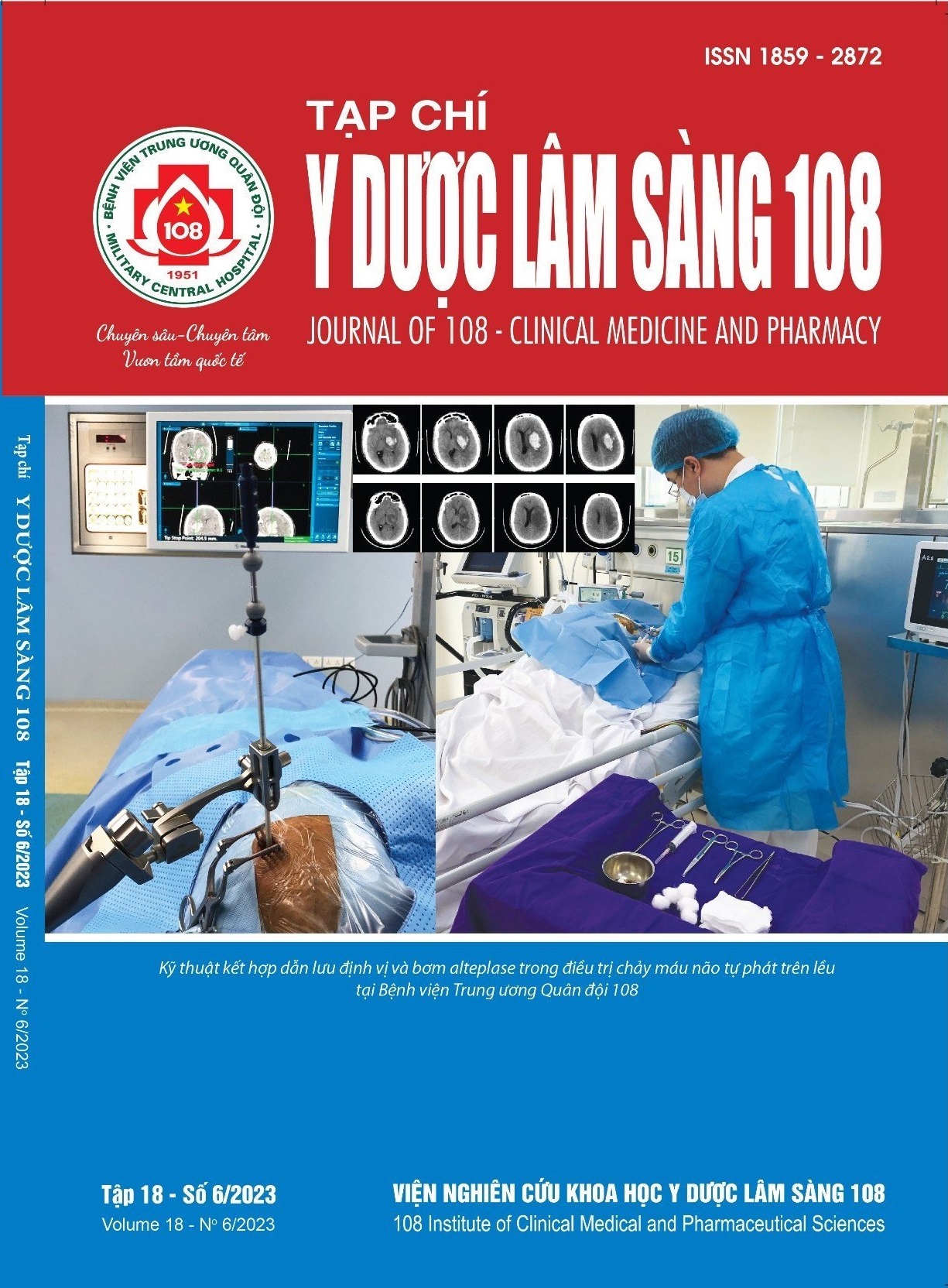Initial results of thoracic duct embolization treatment for chylothorax after general thoracic surgery
Main Article Content
Keywords
Abstract
Objective: To report the results of percutaneous thoracic duct embolization (TDE) treatment for chylothorax in patients post operation of organs in thoracic cavity. Subject and method: A retrospective review of 21 patients with chylous leak post operation in thoracic cavity after failed conservative treatment. All patient were undergone intranodal lymphagiography then TDE at Hanoi Medical University Hospital from 4/2018 to 12/2022. Result: Twenty-one patients with chylothorax through drainage from 70 to 3000ml/day during average 5 weeks (1 week to 9 months). Catheterization of the TD and TDE was successful in 19/21 patients (90.5%), 1 patient undergone TDD only, 1 patient undergone TDD and TD sclerosis injection under CT scanner guidance. All patients had clinical successful with no chylorrhea after intervention. No major complication was noted, two patients (9.5%) experienced chronic diarrhea post TDE. All patients were discharged in following weeks after intervention. Conclusion: TDE is minimal invasive and effective treatment for chylothorax post operation of thoracic cavity.
Article Details
References
2. Yannes M, Shin D, McCluskey K, Varma R, Santos E (2017) Comparative analysis of intranodal lymphangiography with percutaneous intervention for postsurgical chylous effusions. J Vasc Interv Radiol 28(5): 704-711.
3. Lee EW, Shin JH, Ko HK, Park J, Kim SH, Sung KB (2014) Lymphangiography to treat postoperative lymphatic leakage: A technical review. Korean J Radiol 15(6): 724-732.
4. Reynolds JV, Donlon N, Elliott JA et al (2021) Comparison of Esophagectomy outcomes between a National Center, a National Audit Collaborative, and an International database using the Esophageal Complications Consensus Group (ECCG) standardized definitions. Dis Esophagus 34(1).
5. Takuwa T, Yoshida J, Ono S et al (2013) Low-fat diet management strategy for chylothorax after pulmonary resection and lymph node dissection for primary lung cancer. J Thorac Cardiovasc Surg 146(3): 571-574.
6. Bryant AS, Minnich DJ, Wei B, Cerfolio RJ (2014) The incidence and management of postoperative chylothorax after pulmonary resection and thoracic mediastinal lymph node dissection. Ann Thorac Surg 98(1): 232-235; discussion 235-237.
7. Cope C (1998) Diagnosis and treatment of postoperative chyle leakage via percutaneous transabdominal catheterization of the cisterna chyli: A preliminary study. J Vasc Interv Radiol 9(5): 727-734.
8. Schild HH, Naehle CP, Wilhelm KE et al (2015) Lymphatic interventions for treatment of chylothorax. Rofo 187(7): 584-588.
9. Itkin M, Kucharczuk JC, Kwak A, Trerotola SO, Kaiser LR (2010) Nonoperative thoracic duct embolization for traumatic thoracic duct leak: experience in 109 patients. J Thorac Cardiovasc Surg 139(3): 584-589; discussion 589-590.
10. Boffa DJ, Sands MJ, Rice TW et al (2008) A critical evaluation of a percutaneous diagnostic and treatment strategy for chylothorax after thoracic surgery. Eur J Cardiothorac Surg 33(3): 435-439.
11. Kim PH, Tsauo J, Shin JH (2018) Lymphatic Interventions for Chylothorax: A Systematic Review and Meta-Analysis. J Vasc Interv Radiol 29(2): 194-202.
12. Laslett D, Trerotola SO, Itkin M (2012) Delayed complications following technically successful thoracic duct embolization. J Vasc Interv Radiol 23(1): 76-79.
 ISSN: 1859 - 2872
ISSN: 1859 - 2872
